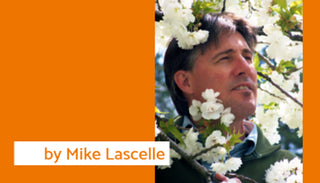
(📸 Vincent Van Gogh | 1887 | Public Domain)
It has been about three years since we have had Quince or Cydonia oblonga in stock and while this used to be a somewhat lesser-known fruit tree, interest in growing it has really surged since it came off market. The problem being that my sole Canadian supplier was shut down after the nursery sold, and the US market was closed to us because this species is not allowed to be imported. Thankfully, that same grower is back in business and has realized that Quince could very well prove to be one of its best-selling fruit trees.

(📸 Public Domain)
For those of you who may not be familiar with this native of Azerbaijan (wedged between Russia and Iran), Cydonia oblonga is an undemanding, easy-to-grow pome fruit with a lot to offer home gardeners.

(📸 Public Domain)
Let’s start with its drought tolerance (once established) and cold hardiness (USDA zone 5), making it a reliable choice in these days of unpredictable weather during both our hot summers and cold winters. Then there’s the fact that its self-fertile, so no cross-pollination is necessary, and one tree will do. They are long-lived (averaging 25 years), do not require intensive pruning (light tip trimming every 4-5 years or thinning out crowded branches on established specimens in late winter), and quite productive once mature, readily producing large crops after about five years. Quince is also not prone to major pest problems, prefers slightly acidic soils (which is generally what we have), and they tolerate both part- to full-sun exposures. So, it is about as undemanding as fruit trees get.

(📸 Shuhrataxmedov | Wikimedia)
The one caveat that you need to understand is that Quince is not an eat-off-the-tree fruit, even though they have the appearance of a juicy golden pear. In fact, some scholars believe this species to be the original forbidden fruit of the Bible, as both the ancient Greeks and Romans referred to it as the "golden apple." The round or pear-shaped fruits are not ready for harvest until late summer to early fall (mid September into October) when they turn a bright golden-yellow and emanate a sweet floral fragrance. Even when fully ripe, they are astringent and as hard as rocks, but when cooked (sliced with a pork roast) or processed into my favourite jelly, they turn a delightful pink colour and have a unique citrusy apple flavour that you won’t find in any other fruit. This species also sports 2-inch-wide soft-pink flowers in late spring (May), has attractive deep green leaves with a hairy grey reverse, and matures at a modest size (12-15’ tall and wide), so they are not going to take up too much garden space.

(📸 MK Lascelle)
So, back to the good news. We are going to have a limited supply of 2-gallon Quince trees available this summer, starting on August 29th. These are well-branched 4-5’ tall specimens and we have two varieties available. ‘Le Borgeot’ is a heavy-cropping cultivar with large pear-shaped fruits and is also known as ‘Meech’s Prolific’. ‘Champion’ is another variety with large pyriform fruits, but it is more tolerant of wetter soils. Both are available at a special introductory price of $49.99.
(📸 MK Lascelle)
If I could leave you with one last buying incentive, it would be this: If they were good enough for Vincent van Gogh to paint, they should be a beautiful addition to your home garden.


